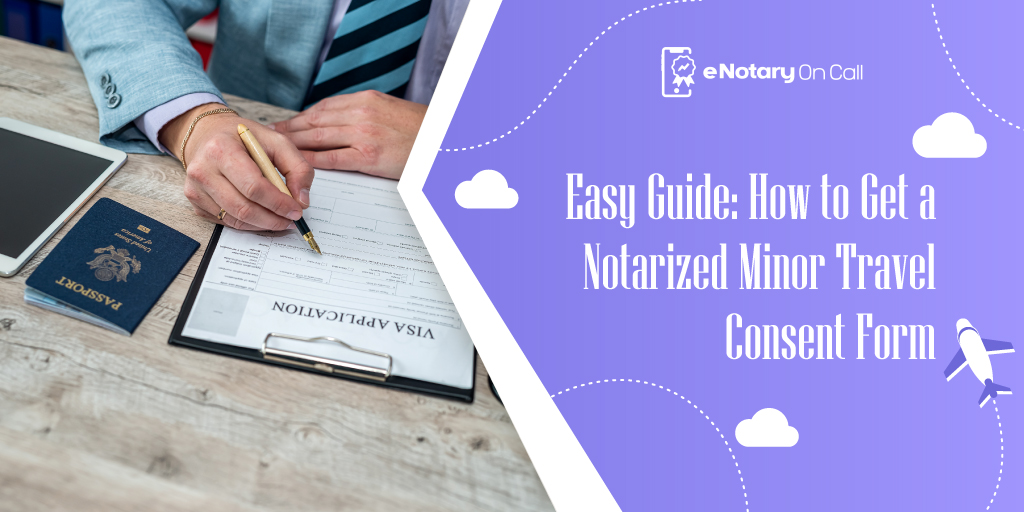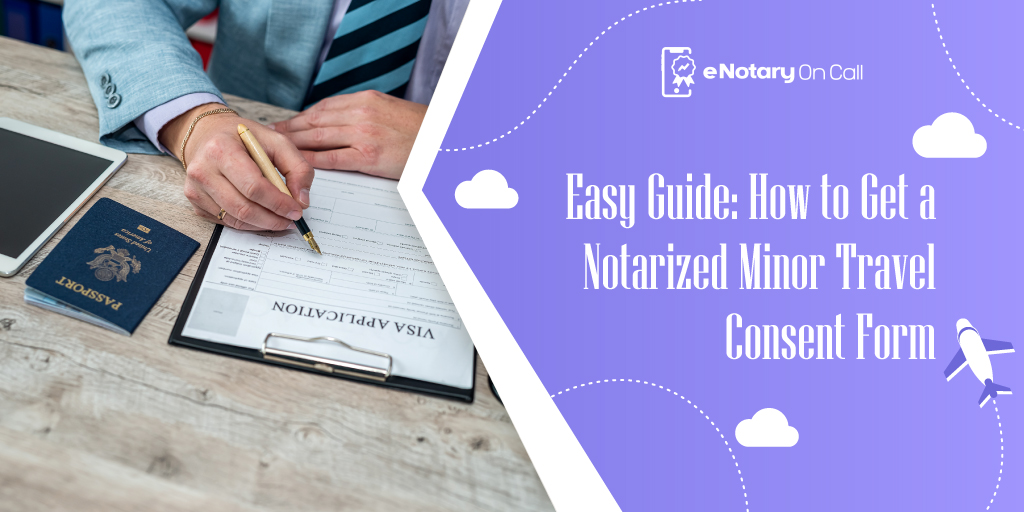
Are you aware of the strict regulations many countries have to protect the safety and welfare of minor children traveling internationally without parents or legal guardians?
It has become increasingly common for families to travel abroad with their children. However, it is essential to be prepared and informed about the requirements, such as obtaining a notarized minor travel consent form.
According to statistics provided by the U.S. Department of State, approximately 96% of the world’s population resides outside the United States. As a result, travel has become a vital aspect of people’s lives, including families. The number of families traveling internationally with their children has seen a significant increase in recent years.
However, it is important to note that many countries have strict regulations in place to ensure the safety and well-being of minors traveling without both parents or legal guardians.
For example, suppose a U.S. citizen wants to travel with their minor child to a foreign country. In that case, they may be required to provide a notarized minor travel consent form, granting permission for the child to travel with only one parent or a non-parental adult.
In this easy guide, we will walk you through the step-by-step process of obtaining a notarized minor travel consent form.
Step 1: Understand the Purpose and Importance of a Notarized Minor Travel Consent Form
A notarized minor travel consent form is a legally binding document that permits a minor child to travel internationally with an adult who is not their legal guardian or with only one parent. This form provides evidence that the parents or legal guardians have granted permission for the child to travel and that they are aware of the itinerary, dates, and purpose of the trip.
For example, let’s say that Jane, a single mother, plans to take her 10-year-old son Jack to France for a summer vacation. As Jane is the sole legal guardian, she needs to obtain a notarized minor travel consent form from Jack’s absent father to comply with French immigration regulations.
This document is crucial for both the minor child and the accompanying adult(s), as it helps avoid legal complications or delays at immigration or border control. It proves that the child is not being abducted or taken against the parents’ wishes and provides peace of mind for all parties involved.
Step 2: Gather the Required Information and Documents
Before starting the process of obtaining a notarized minor travel consent form, gather the necessary information and documents. Usually, you will need the following:
- The child’s full name, date of birth, and passport information
- Parents or legal guardians’ full names, contact information, and passport information
- Details of the trip, including travel dates, destinations, and the purpose of travel
- Notary public information and contact details (if known in advance)
Having all the required information ready will streamline the process and prevent unnecessary delays.
For example, Jane gathers Jack’s passport details and contacts the absent father, requesting his cooperation in the process. She moves on to the next step once she has all the required information.
Step 3: Draft the Minor Travel Consent Form.
The next step is to draft the minor travel consent form. While there are various templates available online, it is crucial to ensure that the form complies with the specific requirements of the country you will be traveling to. It’s recommended to consult with the embassy or consulate of the destination country to obtain the correct template or guidelines for drafting the form.
The consent form generally includes the child’s information, the names of the parents or legal guardians, the details of the trip, and a statement granting permission for the child to travel. It should also include space for signatures from both parents or legal guardians and, in some cases, the child themselves.
For example, Jane finds a template provided by the consulate that meets their requirements. She fills out the form with all the necessary details and prepares for the next step.
Step 4: Consult with a Notary Public
Once the consent form is drafted, it needs to be notarized. A notary public is a licensed professional who can witness the signing of legal documents and provide an official seal and stamp, verifying the authenticity of the signatures.
Research and find a notary public in your area. You can check with your local government offices, banks, or legal service providers for referrals or recommendations. It’s essential to make an appointment in advance, as notaries may have a busy schedule and limited availability.
Consider using eNotary On Call, a convenient and efficient platform for notary services. With eNotary On Call, you can easily schedule a notary appointment from the comfort of your home or office. Our certified notaries are available online to assist you with any document notarization needs you may have. Save time and streamline the process by utilizing the services provided by eNotary On Call.
Step 5: Bring the Required Documents and Visit the Notary Public
On the day of your appointment, make sure to bring all the necessary documents, including the completed minor travel consent form, passports, and any additional supporting documents requested by the notary public. It’s also a good idea to bring copies of all these documents for your records.
During the appointment, the notary public will verify the identity of the parents or legal guardians, witness their signatures on the consent form, and attach their official seal and stamp to the document. The notary may also charge a fee for their services, so be prepared to pay for notarization.
For example, Jane visits the notary’s office with Jack’s passport, a copy of the absent father’s identification, and the drafted consent form. The notary public confirms their identities, witnesses their signatures, and notarizes the document by attaching their official seal and stamp.
Step 6: Keep Copies of the Notarized Consent Form
After the notarization process is complete, it is crucial to keep copies of the notarized consent form for your records. Make copies of the original document and store them in a safe place, along with your passports and other important travel documents.
It is also recommended to carry the original notarized consent form with you while traveling, as immigration or border control authorities may request it upon arrival at your destination.
For example, Jane makes multiple copies of the notarized consent form and keeps one in her carry-on luggage, one in her checked baggage, and another at home in case of an emergency during the trip.
Conclusion
Ensuring that your child has a notarized minor travel consent form is the key to a stress-free journey. By using this simple guide and the examples provided, you can confidently navigate the process, giving you peace of mind that you’ve met all legal requirements.
It’s important to note that requirements can vary by destination country, so consulting with the relevant embassy or consulate is recommended for up-to-date information.
Ready to finalize your notarized minor travel consent form? Consider consulting with eNotary On Call for a convenient and secure online notarization experience. Safe travels!



